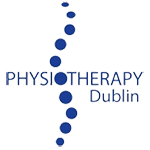Resistance training is a necessary and advantageous component of conditioning for power and field sport such as GAA and rugby. However an increasing number, particularly, of young athletes are presenting to physiotherapy clinics with problems arising from muscle imbalance issues as a consequence of poor training techniques. Compound or Olympic lifting techniques are now regularly incorporated into conditioning programmes for field athletes. These are an excellent means of developing functional power and can assist athletes with their balance on the field. However some more traditional principles of resistance training such as ensuring balanced muscle development should not be lost in this drive towards functional movements.
Don’t squat your way to chronic hamstring trouble
If you’re involved with the development of strength and conditioning programmes for young athletes you should particularly heed traditional advice to ensure balanced muscle development is incorporated into conditioning regimen. It’s remiss of you to allow your young athletes to back squat, front squat, lunge and leg press, without ensuring they have adequate eccentric hamstring control to slow the potential acceleration gains from increased gleut and quad power.
Hamstrings are perhaps the most ignored muscle group in the movement towards functional strengthening and a high volume of hamstring strains presenting in young athletes at the moment with clearly developed quads and gleuts, suggests that adequate muscle balance is not being achieved in newer programmes.
We’re not against functional movement training. We love it. We just want to sound a word of caution that traditional muscle balance theories are adhered to so that our young athletes don’t squat their way to chronic hamstring trouble.

